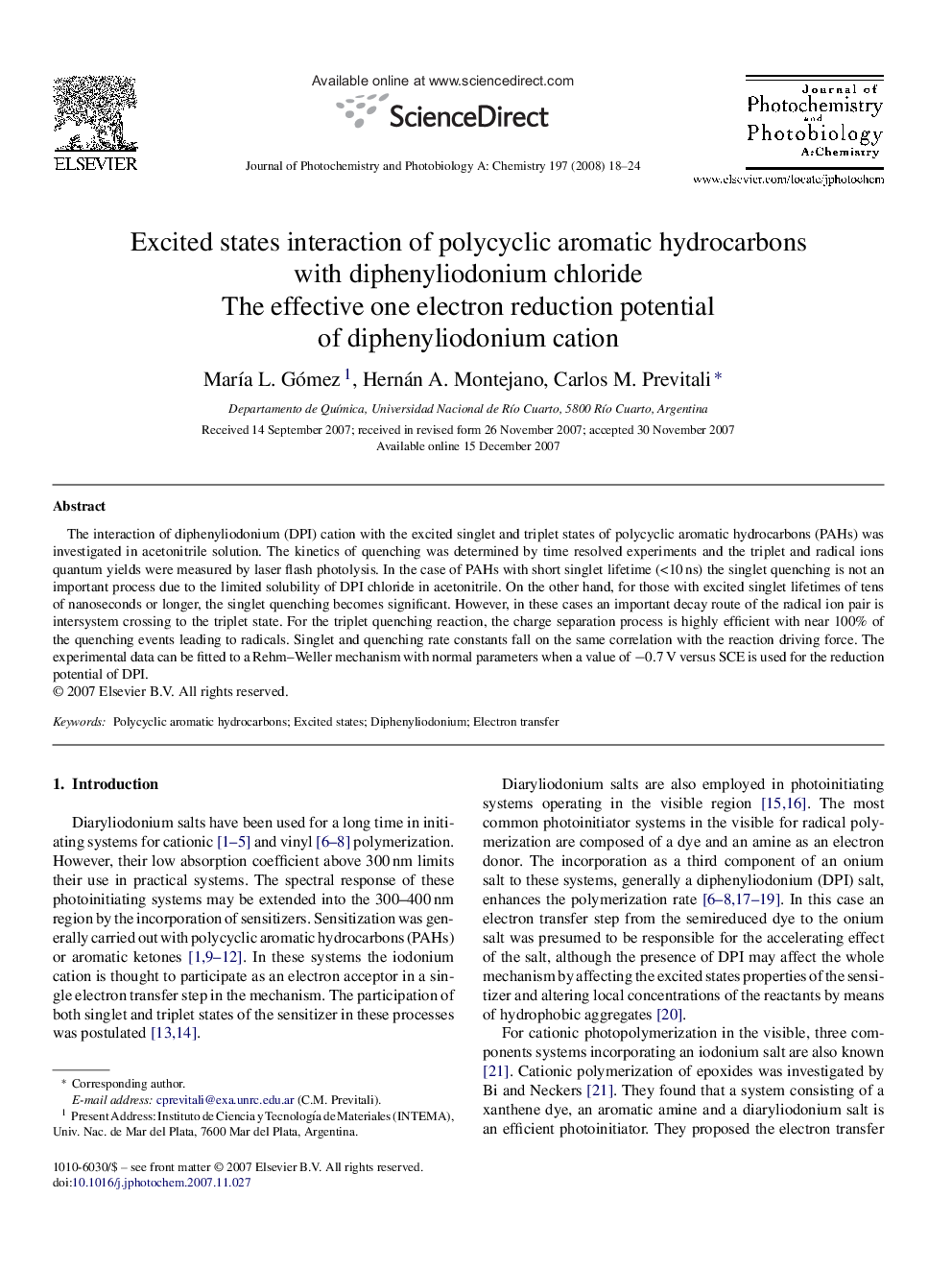| Article ID | Journal | Published Year | Pages | File Type |
|---|---|---|---|---|
| 29132 | Journal of Photochemistry and Photobiology A: Chemistry | 2008 | 7 Pages |
The interaction of diphenyliodonium (DPI) cation with the excited singlet and triplet states of polycyclic aromatic hydrocarbons (PAHs) was investigated in acetonitrile solution. The kinetics of quenching was determined by time resolved experiments and the triplet and radical ions quantum yields were measured by laser flash photolysis. In the case of PAHs with short singlet lifetime (<10 ns) the singlet quenching is not an important process due to the limited solubility of DPI chloride in acetonitrile. On the other hand, for those with excited singlet lifetimes of tens of nanoseconds or longer, the singlet quenching becomes significant. However, in these cases an important decay route of the radical ion pair is intersystem crossing to the triplet state. For the triplet quenching reaction, the charge separation process is highly efficient with near 100% of the quenching events leading to radicals. Singlet and quenching rate constants fall on the same correlation with the reaction driving force. The experimental data can be fitted to a Rehm–Weller mechanism with normal parameters when a value of −0.7 V versus SCE is used for the reduction potential of DPI.
